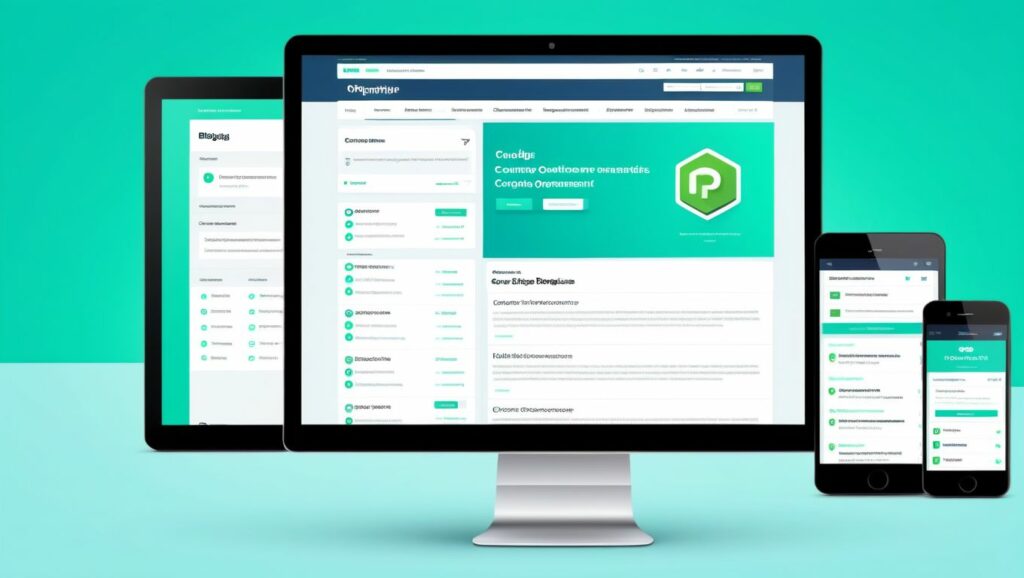I’d be happy to help you learn PHP! PHP (Hypertext Preprocessor) is a widely-used open-source server-side scripting language especially suited for web development. Below is a structured guide to get you started, complete with explanations, examples, and resources.
1. Getting Started with PHP
What is PHP?
PHP is a server-side scripting language designed for web development but also used as a general-purpose programming language. It can be embedded into HTML and is especially powerful when combined with databases like MySQL.
Why Learn PHP?
- Wide Usage: Powers major platforms like WordPress, Facebook, and Wikipedia.
- Large Community: Extensive resources, tutorials, and community support.
- Versatility: Suitable for both small and large-scale web applications.
2. Setting Up Your Development Environment
a. Install a Local Server
To run PHP scripts locally, you need a server environment. You can use packages like:
- XAMPP: Cross-platform and includes Apache, MySQL, PHP, and Perl.
- WAMP: Windows-specific.
- MAMP: macOS-specific.
b. Choose a Code Editor or IDE
Some popular options:
- Visual Studio Code: Free and highly extensible.
- PHPStorm: Paid but powerful with many features.
- Sublime Text: Lightweight and customizable.
3. Basic PHP Syntax
a. PHP Tags
PHP code is embedded within <?php ... ?> tags.
<?php
echo "Hello, World!";
?>
b. Comments
- Single-line Comments:
// This is a single-line comment - Multi-line Comments:
/* This is a multi-line comment */
4. Variables and Data Types
a. Variables
- Start with a dollar sign
$. - Followed by the variable name.
<?php
$greeting = "Hello, World!";
$number = 42;
?>
b. Data Types
- String:
"Hello" - Integer:
42 - Float:
3.14 - Boolean:
trueorfalse - Array:
array(1, 2, 3)or[1, 2, 3] - NULL:
null
5. Operators
a. Arithmetic Operators
<?php
$a = 10;
$b = 5;
echo $a + $b; // 15
echo $a - $b; // 5
echo $a * $b; // 50
echo $a / $b; // 2
echo $a % $b; // 0
?>
b. Assignment Operators
<?php
$x = 10;
$x += 5; // $x is now 15
?>
c. Comparison Operators
<?php
var_dump(5 == "5"); // true
var_dump(5 === "5"); // false
?>
6. Control Structures
a. Conditional Statements
<?php
$age = 20;
if ($age >= 18) {
echo "You are an adult.";
} elseif ($age >= 13) {
echo "You are a teenager.";
} else {
echo "You are a child.";
}
?>
b. Switch Statement
<?php
$color = "red";
switch ($color) {
case "red":
echo "Color is red.";
break;
case "blue":
echo "Color is blue.";
break;
default:
echo "Color is unknown.";
}
?>
c. Loops
- For Loop:
<?php for ($i = 0; $i < 5; $i++) { echo $i; } ?> - While Loop:
<?php $i = 0; while ($i < 5) { echo $i; $i++; } ?> - Foreach Loop:
<?php $arr = [1, 2, 3]; foreach ($arr as $value) { echo $value; } ?>
7. Functions
a. Defining and Calling Functions
<?php
function greet($name) {
return "Hello, " . $name . "!";
}
echo greet("Alice"); // Outputs: Hello, Alice!
?>
b. Function Parameters and Return Values
<?php
function add($a, $b) {
return $a + $b;
}
echo add(5, 3); // 8
?>
8. Working with Forms and User Input
a. HTML Form Example
<!DOCTYPE html>
<html>
<body>
<form method="post" action="welcome.php">
Name: <input type="text" name="name"><br>
<input type="submit">
</form>
</body>
</html>
b. Processing Form Data in PHP (welcome.php)
<?php
$name = htmlspecialchars($_POST['name']);
echo "Welcome, " . $name . "!";
?>
Note: htmlspecialchars() is used to prevent XSS attacks by converting special characters to HTML entities.
9. Interacting with Databases
a. Using MySQL with PHP
- Connect to the Database
<?php
$servername = "localhost";
$username = "username";
$password = "password";
$dbname = "database";
// Create connection
$conn = new mysqli($servername, $username, $password, $dbname);
// Check connection
if ($conn->connect_error) {
die("Connection failed: " . $conn->connect_error);
}
echo "Connected successfully";
?>
- Performing a Query
<?php
$sql = "SELECT id, name FROM users";
$result = $conn->query($sql);
if ($result->num_rows > 0) {
while($row = $result->fetch_assoc()) {
echo "id: " . $row["id"]. " - Name: " . $row["name"]. "<br>";
}
} else {
echo "0 results";
}
$conn->close();
?>
Note: Consider using PDO (PHP Data Objects) for a more secure and flexible approach, especially when dealing with prepared statements to prevent SQL injection.
10. Object-Oriented PHP (OOP)
a. Classes and Objects
<?php
class Car {
public $color;
public $model;
public function __construct($color, $model) {
$this->color = $color;
$this->model = $model;
}
public function message() {
return "My car is a " . $this->color . " " . $this->model . ".";
}
}
$myCar = new Car("black", "Tesla");
echo $myCar->message();
?>
b. Inheritance
<?php
class Vehicle {
public $brand = "Ford";
public function honk() {
return "Beep!";
}
}
class Car extends Vehicle {
public $model = "Mustang";
}
$myCar = new Car();
echo $myCar->brand; // Ford
echo $myCar->model; // Mustang
echo $myCar->honk(); // Beep!
?>
11. Best Practices
- Use Meaningful Variable Names: Makes your code easier to understand.
- Keep Code Organized: Use indentation and spacing for readability.
- Sanitize User Input: Always validate and sanitize data from users to prevent security vulnerabilities.
- Use Version Control: Tools like Git help manage code changes.
- Follow PHP Standards: Adhere to PSR Standards for consistency.
12. Resources to Continue Learning
a. Official Documentation
- PHP Official Documentation – Comprehensive and authoritative.
b. Online Tutorials
- W3Schools PHP Tutorial
- PHP The Right Way – Best practices and standards.
- Codecademy’s PHP Course
c. Books
- “PHP & MySQL: Novice to Ninja” by Kevin Yank
- “PHP Objects, Patterns, and Practice” by MATT ZANDSTRA
d. Practice Platforms
e. Community and Support
13. Building a Simple Project: To-Do List Application
Putting your knowledge into practice is crucial. Here’s a high-level overview of building a simple to-do list application.
a. Features
- Add tasks.
- View tasks.
- Mark tasks as completed.
- Delete tasks.
b. Steps to Build
- Set Up the Project Structure
- Create necessary files:
index.php,add.php,delete.php,complete.php, and a database file.
- Create necessary files:
- Design the Database
- Use MySQL to create a
taskstable with fields likeid,description,is_completed, andcreated_at.
- Use MySQL to create a
- Create Forms and Display Tasks
- Use HTML forms to add tasks.
- Fetch and display tasks from the database.
- Implement Functionality
- Write PHP scripts to handle adding, deleting, and updating tasks.
- Style the Application
- Use CSS to make the application visually appealing.
- Enhance with JavaScript (Optional)
- Add interactivity, such as AJAX for asynchronous operations.
c. Sample Code Snippet: Adding a Task
<!-- add.php -->
<?php
if ($_SERVER["REQUEST_METHOD"] == "POST") {
$task = htmlspecialchars($_POST['task']);
// Database connection
$conn = new mysqli("localhost", "username", "password", "database");
if ($conn->connect_error) {
die("Connection failed: " . $conn->connect_error);
}
$stmt = $conn->prepare("INSERT INTO tasks (description, is_completed) VALUES (?, 0)");
$stmt->bind_param("s", $task);
if ($stmt->execute()) {
echo "New task added successfully";
} else {
echo "Error: " . $stmt->error;
}
$stmt->close();
$conn->close();
header("Location: index.php");
exit();
}
?>
14. Next Steps
Once you’re comfortable with the basics, consider exploring more advanced topics:
- Frameworks: Learn frameworks like Laravel or Symfony to build robust applications efficiently.
- APIs: Create and consume APIs using PHP.
- Security: Deep dive into securing PHP applications.
- Testing: Implement testing using PHPUnit.
15. Final Tips
- Practice Regularly: Consistency is key. Try to code daily or set regular milestones.
- Build Projects: Apply what you learn by building real-world projects.
- Join Communities: Engage with other learners and professionals to exchange knowledge.
- Stay Updated: PHP evolves, so keep up with the latest versions and features.
Embarking on learning PHP is a rewarding journey, and with these steps, resources, and consistent practice, you’ll be well on your way to becoming proficient. If you have any specific questions or need further assistance on particular topics, feel free to ask!












